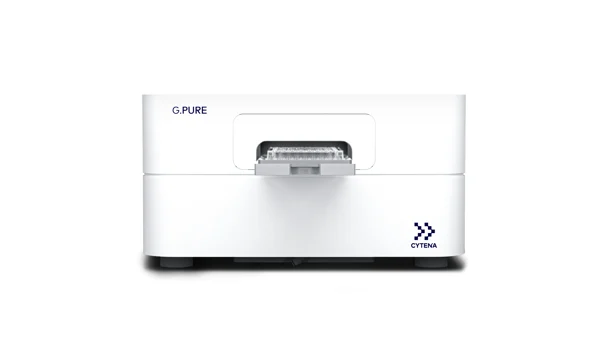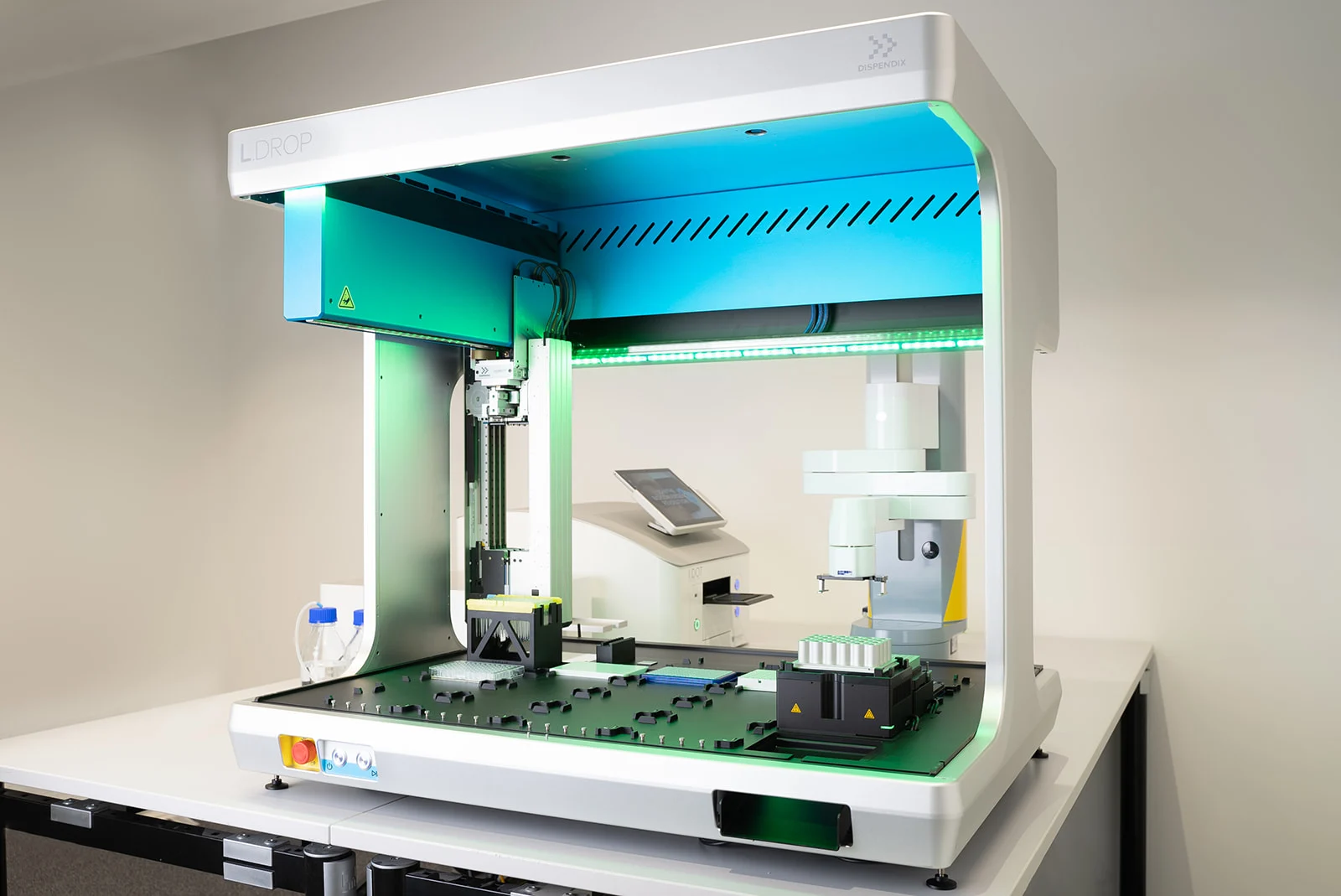If you asked any researcher about the most important components of any laboratory workflow, accuracy and efficiency would likely sit right at the top. However, despite their critical importance, accuracy and efficiency represent significant challenges in laboratory workflows.
Manual DNA clean-up, in particular, is prone to errors and inefficiencies, including sample contamination, inconsistent results, and considerable time consumption. These issues can lead to unreliable data and hinder the progress of scientific research. Automating DNA clean-up transforms this process, dramatically boosting throughput and ensuring consistent, high-quality results.
Here, we will explore how automated magnetic bead-based DNA clean-up systems, which can be used in conjunction with AMPure XP beads, minimize human error, reduce contamination risks, and streamline workflows. Moreover, we discuss the impact of these systems in various applications, from genomic studies to environmental testing.
Understanding Automated DNA Clean-up
Automated DNA clean-up is a critical step in preparing DNA samples for various downstream applications, including sequencing and polymerase chain reaction (PCR) analysis. Magnetic bead-based methods, such as those using AMPureXP beads, are widely used in automated DNA clean-up due to their efficiency in size selection and removal of contaminants. These methods involve using magnetic beads like AMPureXP beads to bind DNA, allowing its separation from other components. This approach minimizes sample handling errors and cross-contamination, eliminating frustrating bottlenecks in high-throughput applications1. Comparative studies have shown that automated DNA clean-up methods generally far outperform manual methods in terms of efficiency, consistency, and reduction of contamination and human error2,3.
Benefits of Automated DNA Clean-up Systems
Increased Throughput
Automated DNA clean-up systems, including those employing AMPure XP beads, streamline the purification process, allowing multiple samples to be processed simultaneously. This efficiency enables researchers to handle large volumes of samples in a shorter time frame, accelerating workflows in genomic studies, next-generation sequencing (NGS) library prep, and other high-throughput applications.
Enhanced Accuracy & Reproducibility
These systems provide precise and consistent purification conditions, ensuring uniform removal of contaminants such as proteins, salts, and other impurities. By maintaining high accuracy and consistency, automated DNA clean-up systems using magnetic bead-based separation with reagents like AMPure XP beads improve the quality and reliability of downstream applications. This consistency is crucial for longitudinal genomic studies and multicenter research, where reproducibility across different batches and locations is essential for validating findings and maintaining scientific rigor. This is particularly important in the context of the reproducibility crisis plaguing modern research4.
Labor Savings
Automated DNA clean-up reduces the need for manual handling, freeing up lab personnel to focus on more complex analytical tasks and experimental design. This reduction in manual intervention not only lowers labor costs but also minimizes the risk of repetitive strain injuries, promoting a safer and more productive work environment.
Key Features of Modern Automated DNA Clean-up
- Programmable Protocols. Modern automated DNA clean-up devices streamline the process to minimize the risk of human error. For example, the G.PURE NGS Clean-Up Device (Fig. 1) enables users to save protocols with programmed wash and resuspension volume and number of wash cycles. This minimizes labor, enhances efficiency, and improves experimental reproducibility.

Figure 1. The G.PURE NGS Clean-Up Device facilitates magnetic bead-based DNA clean-ups, using reagents such as AMPure XP beads to produce high-quality DNA in a simplified workflow.
- Flexibility & Versatility. Project goals are constantly changing in line with new publications, findings, and ideas, and experimental design is frequently adapted as a result. With the G.PURE NGS Clean-Up Device, bead-based clean-ups can be performed in 96- and 384-well plates without the need for complex device reconfiguration.
- Integration with Other Lab Equipment. The G.PURE NGS Clean-Up Device can be integrated with the I.DOT Liquid Handler to automate NGS library construction in a standardized, streamlined method (Fig. 2). This not only makes it more straightforward to reproduce your own and other lab members’ work4, but it also leads to a 90% reduction in pipette tip usage, driving plastic waste reduction for greener labs5.


Figure 2. Combining automation tools is a simple way to streamline entire workflows, minimizing human intervention and associated errors.
Applications in Various Research & Clinical Settings
Automated DNA clean-up systems play a crucial role in high-throughput sequencing, PCR, and protein assays by enhancing efficiency, reducing human error, and increasing scalability. Several studies have highlighted the advantages of such systems, including one study that showed how an automated plasmid preparation system enables large-scale sequencing by processing up to 40,000 samples, including DNA clean-up, in only 17.5 hours6, and another showing that sequence-ready DNA templates could be produced at just $0.29 per sample7.
The high throughput and quality afforded by automated DNA clean-up systems are crucial in genetic screening assays frequently carried out in both clinical diagnostics and drug discovery pipelines. Rare disease diagnostics generally involves identifying pathogenic mutations through targeted or whole genome sequencing on patients’ DNA.
The sensitivity of the sequencing assays means the purity and quality of the DNA are paramount, while the patient-derived nature of the samples means that often limited amounts are available and obtaining more is not always feasible. Thus, pipelines have been developed that ensure highly accurate, sensitive, and specific sequencing can be performed per regulatory guidelines using automated processes, including automated DNA clean-up8.
In environmental testing, automated DNA clean-up systems play a crucial role by ensuring the purity and quality of DNA samples extracted from various environmental sources. Environmental samples often contain a mixture of organic and inorganic contaminants. Automated DNA clean-up systems efficiently remove these contaminants, ensuring high-quality DNA for downstream analysis, for example, studying water quality9,10.
Conclusion
Automated DNA clean-up systems are essential for enhancing workflow accuracy, efficiency, and reproducibility. By minimizing human error and contamination, particularly through magnetic bead-based separation using AMPure XP beads, these systems ensure the high quality of DNA samples necessary for downstream applications like sequencing, PCR, and cloning. They play a crucial role in various fields, including environmental testing, genetic screening, and drug discovery, by facilitating high-throughput processing and consistent results. Investing in automated DNA clean-up is a strategic move for any research laboratory aiming to improve the efficiency and accuracy of its genomic workflows, ultimately advancing the pace and reliability of scientific discoveries.
Elevate your genomic research to new heights with the G.PURE NGS Clean-Up Device. Achieve unparalleled sample purity, efficiency, and reliability, ensuring that every experiment delivers accurate and reproducible results. Book a demo today!
References
- Lennon NJ, Lintner RE, Anderson S, et al. A scalable, fully automated process for construction of sequence-ready barcoded libraries for 454. Genome Biol. 2010;11(2):R15. doi:10.1186/gb-2010-11-2-r15
- Wilke WW, Jones RN, Sutton LD. Automation of polymerase chain reaction tests. Diagn Microbiol Infect Dis. 1995;21(4):181-185. doi:10.1016/0732-8893(95)00041-8
- Amory S, Huel R, Bilić A, Loreille O, Parsons TJ. Automatable full demineralization DNA extraction procedure from degraded skeletal remains. Forensic Sci Int Genet. 2012;6(3):398-406. doi:10.1016/j.fsigen.2011.08.004
- Baker M. 1,500 scientists lift the lid on reproducibility. Nature. 2016;533(7604):452-454. doi:10.1038/533452a
- Urbina MA, Watts AJR, Reardon EE. Labs should cut plastic waste too. Nature. 2015;528(7583):479-479. doi:10.1038/528479c
- Itoh M, Kitsunai T, Akiyama J, et al. Automated filtration-based high-throughput plasmid preparation system. Genome Res. 1999;9(5):463-470.
- Marziali A, Willis TD, Federspiel NA, Davis RW. An automated sample preparation system for large-scale DNA sequencing. Genome Res. 1999;9(5):457-462.
- Marceddu G, Dallavilla T, Guerri G, Manara E, Chiurazzi P, Bertelli M. PipeMAGI: an integrated and validated workflow for analysis of NGS data for clinical diagnostics. Eur Rev Med Pharmacol Sci. 2019;23(15):6753-6765. doi:10.26355/eurrev_201908_18566
- Sepulveda AJ, Birch JM, Barnhart EP, et al. Robotic environmental DNA bio-surveillance of freshwater health. Sci Rep. 2020;10(1):14389. doi:10.1038/s41598-020-71304-3
- Nakai M, Masumoto T, Asaeda T, Rahman M. Improving the efficiency of adaptive management methods in multiple fishways using environmental DNA. Heneberg P, ed. PLOS ONE. 2024;19(4):e0301197. doi:10.1371/journal.pone.0301197